Morasso Wrote a Review of Recent Developments in Art in Which He Portrayed Marinetti as
Articles and Features
Art Movement: Futurism – Celebration of Motility
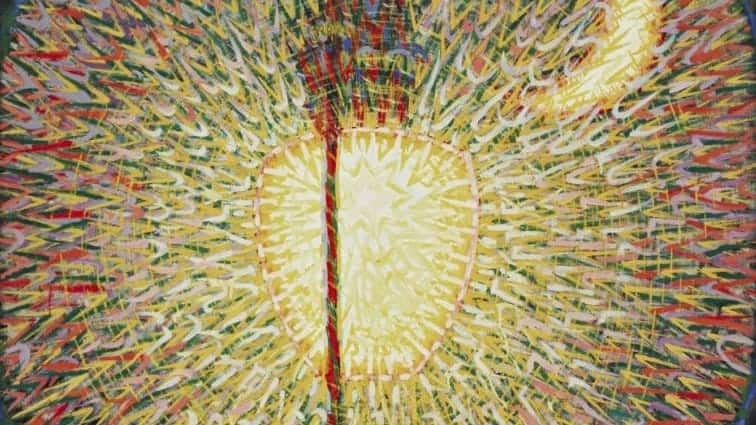
"We declare… a new beauty, the dazzler of speed. A racing motor car… is more beautiful than theVictory of Samothrace."
– Futurist Manifesto
Futurism definition: what is Futurism?
Futurism was an Italian art movement of the early 20th century, which aimed to capture the dynamism and free energy of the modernistic world in art. Futurists were well versed in the latest developments in science and philosophy and particularly fascinated with aviation and cinematography. Futurist artists denounced the past, every bit they felt the weight of past cultures was extremely oppressive – particularly in Italian republic – and instead proposed an art celebrating modernity and its industry and technology.
Primal menstruation: 1908 – 1944
Key regions: Italia
Fundamental words: move, dynamism, modernity, industry, technology, speed
Fundamental artists: Filippo Tommaso Marinetti, Umberto Boccioni, Carlo Carrà, Giacomo Balla, Gino Severini, Luigi Russolo, Benedetta Cappa, Antonio Sant'Elia
Origins of Futurism
In 1908, the Italian poet Filippo Tommaso Marinetti swerved to miss a cyclist and crashed his car in a ditch. The experience of the former bicycle versus the modernistic car inspired him to write his manifesto of Futurism, a movement that would conquer nostalgia and tradition. Past 1910, the young artists Umberto Boccioni, Carlo Carrà and Luigi Russolo had joined Marinetti's movement. They suggested Futurism could reach beyond just literature and poesy, and the iii artists wrote the Manifesto of Futurist Painters. They sent this to their colleagues Gino Severini and Giacomo Balla, who signed the manifesto. Together, these artists formed the core grouping of Futurist artists.
Fundamental ideas behind Futurism
The Futurists sought to sweep away what they believed were outdated, traditional notions about art. Instead, they wanted to supersede these with an energetic commemoration of the machine age. The key focus was to correspond a dynamic vision of the future. Equally such, they often portrayed urban landscapes and new technologies including trains, cars and aeroplanes. They glorified speed, violence and the working classes, believing they would accelerate modify.
In order to reach movement and dynamism in their art, the Futurists developed techniques in order to limited speed and motility. These techniques included blurring and repetition. They as well made use of lines of force – a method which they had adopted from the Cubists. The Futurists worked across a wide range of art forms including painting, architecture, sculpture, literature, theatre and music.
Famous Futurists
Major players associated with Futurism in visual arts were Umberto Boccioni, Giacomo Balla, Carlo Carrà, and Gino Severini.
Famous Futurism Artworks
Umberto Boccioni,Unique Forms of Continuity in Infinite (1913)
Arguably the most iconic Futurist artwork ever made, Umberto Boccioni'sUnique Forms of Continuity in Space is a "Cubo-Futurist" figure striding in forward movement. The figure's powerful legs seem to exist marching alee, carved by forces such equally wind and speed. This modernistic-man automobile can exist read equally an allegory for Italy's quest to define itself as a mod nation.
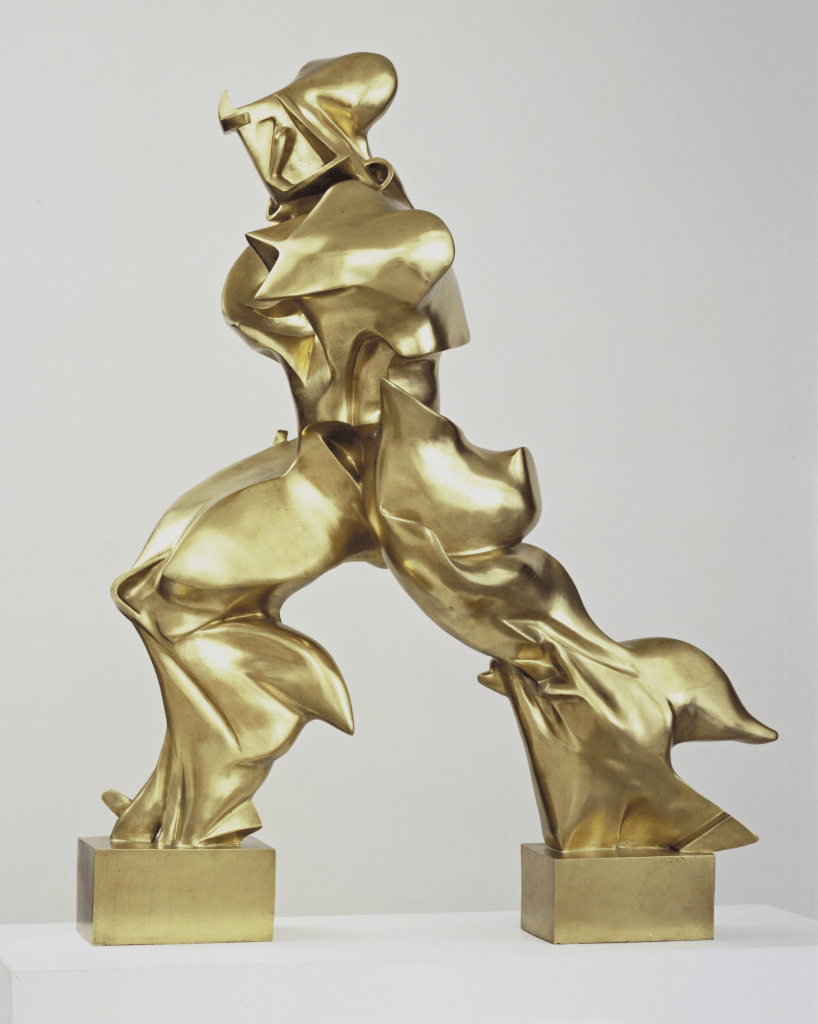
Giacomo Balla,Dynamism of a Dog on a Leash (1912)
Dynamism of a Dog on a Leash is Balla's all-time-known work, and shows a dachshund on a ternion and the anxiety of the lady walking it in rapid motion. Balla achieved this motion by blurring and multiplication of their legs and feet.
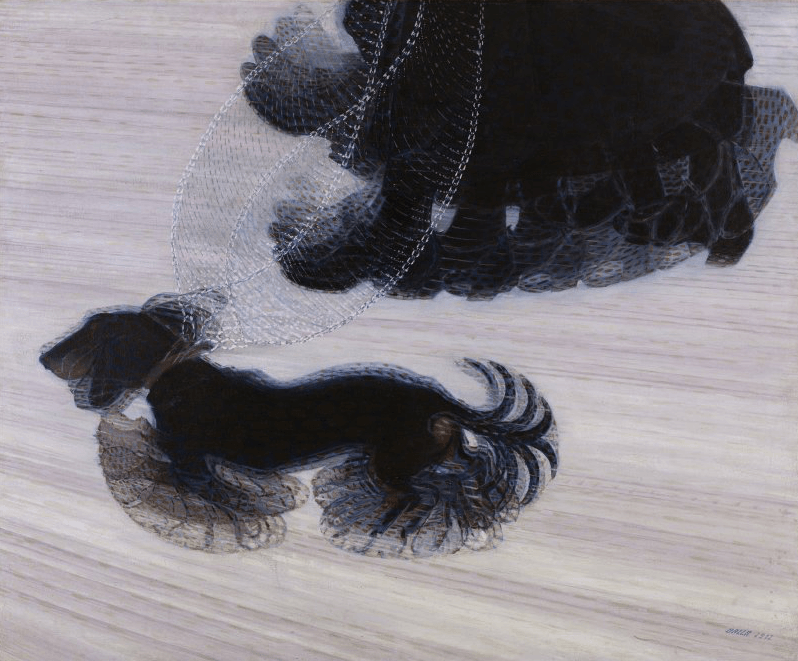
Carlo Carrà,The Funeral of the Anarchist Galli(1910–11)
The Funeral of the Anarchist Galli is one of Carrà's near famous works. Angelo Galli was an anarchist and labour organiser in Milan who was killed by the police during a strike in 1904. Since they feared that Galli's funeral would turn into a political demonstration, the state sent police to obstruct anarchists from entering the cemetery. When they resisted, police responded with force and a fight broke out. Carrà witnessed the result and captured the intensity and anarchy of the scene, as well as the rapid movement, in this painting.

Gino Severini,Dancer at Pigalle (1912)
Gino Severini's dancer is depicted in the eye of the painting and is equanimous of dynamic intersecting lines and swirling material. Concentric circles lead outwards to the edges of the painting, and each round layer contains bitty images of musicians, instruments and audience members. This is meant to capture the essence and dynamism of the performance.
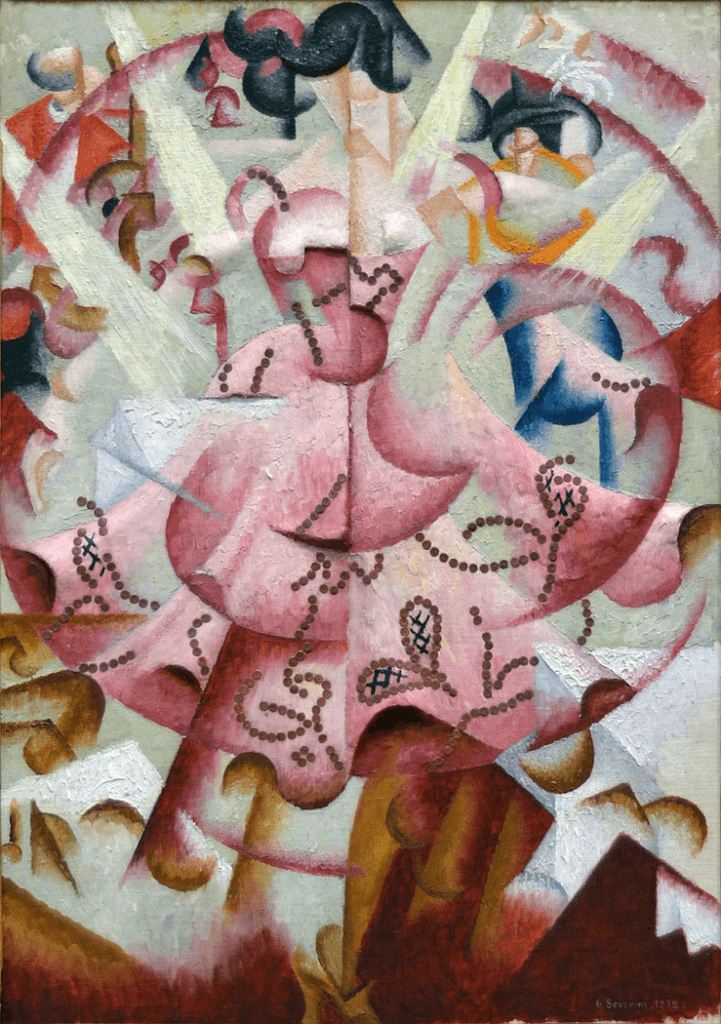
Futurist architecture
Italian architect Antonio Sant'Elia embraced the twin ideals of mechanisation and motility, proposing a vision of a modern city in the form of a gigantic auto; he named it Città Nuova ("New Urban center"), a name quite contextually appropriate. This utopian futurist city, designed between 1912 and 1914, was a vast, multi-level, interconnected urban conurbation where massive skyscrapers were integrated by elevators, bridges, and elevated walkways in a constantly evolving artificial landscape.
Paradoxically, Sant'Elia, like many other Futurists, saw warfare as the means to destroy the erstwhile earth and build the much sought after time to come. Even so, it was the entropy of state of war itself that would shatter their illusions, destroying non but the socio-economic conditions necessary to facilitate such grandiose plans merely also its main protagonists – Sant'Elia was himself killed in a boxing at the age of twenty-viii with almost no completed works of architecture left behind.
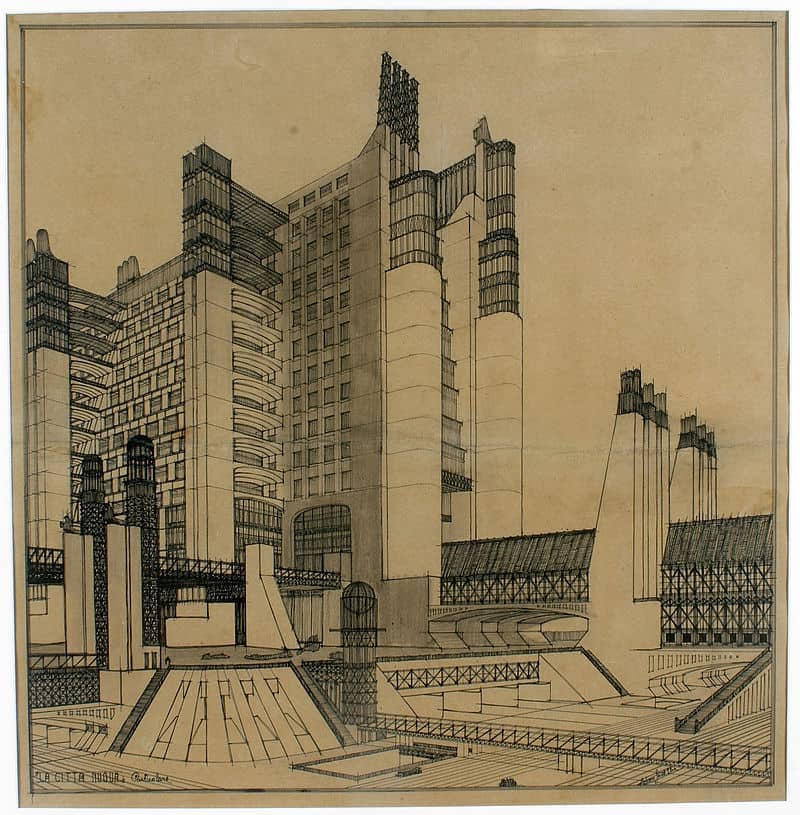
"Continuing on the world'due south summit we launch once again our insolent challenge to the stars!"
– Futurist Manifesto
The Phases and Politics of Futurism
Futurism was at its about influential and active betwixt 1909 and 1914. During the war, the start wave of Italian Futurism came to an finish when some members of the group withdrew, and others turned to different styles. However, afterward the Kickoff World State of war, Marinetti revived the group. This revival attracted a new set of artists and information technology became known as second-generation Futurism.
Futurism is 1 of the most politicised art movements ever to have existed. Many Italian Futurists were supporters of Fascism. They were strongly patriotic, supportive of violence, and opposed to parliamentary democracy. In 1922, when Mussolini came into power, Futurism was officially accustomed by the Fascists. As long equally the art served to support their political agenda, they were satisfied. Afterward, after the autumn of Fascism, many Futurist artists were negatively affected by their association with Fascism.
The legacy of Futurism
The Italian Futurists influenced many artists and other fine art movements. Vorticism was inspired past Cubism and Futurism, embracing dynamism, the automobile age, and modernity. Information technology is oft regarded as the British equivalent to Futurism, yet its founder, Wyndham Lewis, securely disliked the Futurists. In Russian federation, artists like Natalia Goncharova were embarking on their own Futurist explorations – Russian Futurism is usually considered a separate movement, only some of its artists did engage with Italian Futurism.
In the The states, the footing-breaking Armory Show introduced Futurism along with the other European Avant-garde movements to an astonished American audition, ultimately leading to the rise of American Modernism with the development of Precisionim, the kickoff real indigenous modern fine art movement in the United states.
After the horrors of the First World War, many artists were disillusioned past applied science and the modern age, which had contributed to this brutal state of war. For this reason, many of them rejected Futurism and started using more than traditional approaches. This miracle is described as the "return to lodge."
Futurism FAQ
What are the characteristics of Futurism?
The characteristics of futurism are a focus on the technical progress of the modern machine age, dynamism, speed, energy, vitality and change.
Who created Futurism?
Futurism was started by Italian poet Filippo Tommaso Marinetti, who wrote the Futurist Manifesto. He was before long joined by the artists Umberto Boccioni, Carlo Carrà, Luigi Russolo, Gino Severini and Giacomo Balla.
What does information technology hateful to be a Futurist?
For Futurist artists, the aim was to capture the dynamism and energy of the modern globe in art. They denounced the past, instead proposing an art that celebrated the industrial and technological developments of the modern historic period.
Relevantsources to learn more
Read more about Fine art Movements and Styles Throughout History hither
Fritz Lang's Urban center. How the Iconic Silent Movie Took Inspiration from Art Movements
Source: https://magazine.artland.com/art-movement-futurism/
0 Response to "Morasso Wrote a Review of Recent Developments in Art in Which He Portrayed Marinetti as"
Post a Comment